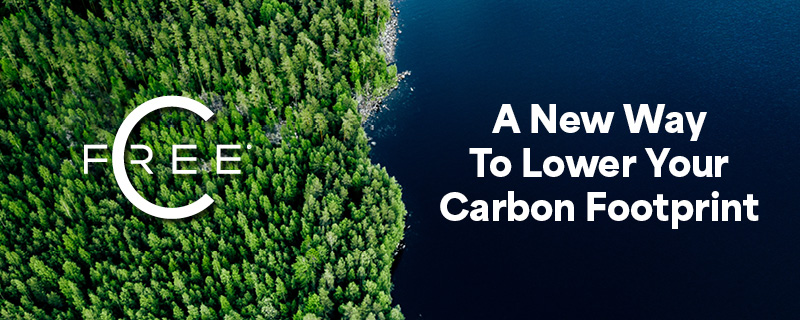With Earth Day fast approaching, you may be getting more questions from climate-conscious customers about the clothing they’re buying and its effect on the world we share. As the Environmental Defense Fund points out:
“Responding to the climate crisis is smart business — but it’s also complicated work. Developing targets and action plans takes time, money, expertise and internal buy-in. Plus, there is the ongoing work of tracking and evaluating progress, and keeping on top of evolving climate science, corporate trends, and regulatory change.”
 One aspect of this complex picture is the idea of being carbon neutral, in itself a complicated and much-debated subject. Part of our response to this goal is our growing C-FREE selection of carbon-neutral clothing and accessories. Understanding why and how this makes a difference can help you answer your customers’ questions with confidence.
One aspect of this complex picture is the idea of being carbon neutral, in itself a complicated and much-debated subject. Part of our response to this goal is our growing C-FREE selection of carbon-neutral clothing and accessories. Understanding why and how this makes a difference can help you answer your customers’ questions with confidence.
What Does “Carbon Neutral” Really Mean?
Every organization, no matter how green they try to be, has an effect on the world around them. Through the need for energy, transportation and other resources, one of these effects is the emission of greenhouse gases into the atmosphere, usually carbon dioxide (CO2). This is called their “carbon footprint.”
In naturally-occurring amounts, CO2 is manageable through natural “sinks” that offset a buildup in the atmosphere. At excessive levels, however, it slowly but surely creates a world that cannot sustain life. While nobody can completely erase their carbon footprint, becoming carbon neutral is a process of making it as small as possible, and then finding ways to offset what remains, just like the natural world does for the CO2 it produces.
How Can We Make Apparel Carbon Neutral?
There’s a lot that goes into making clothing — the fabric has to be spun, knit, cut and stitched together into garments. It has to be transported from place to place along this journey. The people who design and make clothing are supported by energy and other resources.
The result isn’t just a t-shirt or a polo — each of these processes usually results in some level of carbon emissions too. Identifying them tells us where we should focus our attention to reduce the carbon footprint of apparel.
“Up to 80 percent of a product’s environmental impact is determined in the design phase and is baked into materials and dyes,” according to the State of Fashion 2024 report.
Designing sustainable products is a big part of helping apparel be carbon neutral, but as we factor in the human side of it — transportation, electricity and other resources — we’re not quite there yet. That’s where carbon offsets come into the picture.
How Does C-FREE Factor In?
 The growing C-FREE selection of apparel is an example of how this can work with quality products made to last from recycled and organic fabrics to minimize their carbon footprint from the beginning.
The growing C-FREE selection of apparel is an example of how this can work with quality products made to last from recycled and organic fabrics to minimize their carbon footprint from the beginning.
Then we offset what’s left. A carbon offset is “an instrument designed to allow the continuing release of carbon in one place in exchange for reducing the carbon release in another place.”
For example, we still need to transport goods from one place to another, and this activity emits carbon. The projects we support — hydro power, wind turbines, acid abatement and more — are verified by a third party to balance the carbon equation from the places where we know we still emit carbon to places where we can help reduce it.
The final process for a product becoming carbon neutral looks like this:
- REDUCE: Lower our impact through the use of preferred materials
- MEASURE: Calculate all the carbon emissions generated in a product’s life cycle
- NEUTRALIZE: Purchase third-party, verified offsets to bring the total carbon emissions to zero
Each item in the C-FREE line is certified carbon neutral through this process, from t-shirts and hoodies to bags, hats and blankets.
When your customers come to you this month — or any time of the year — wanting to know how they can be confident that the clothing they buy is made sustainably with a minimal impact on the environment, the answer is surprisingly simple:
Go C-FREE.
